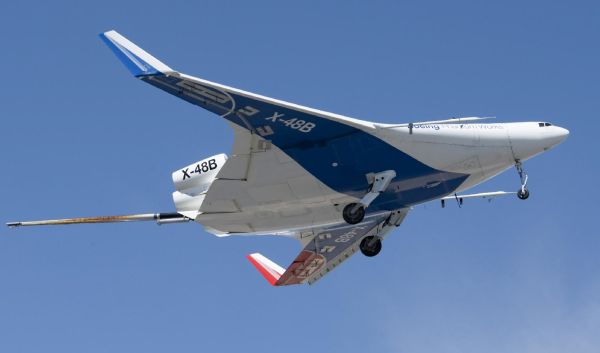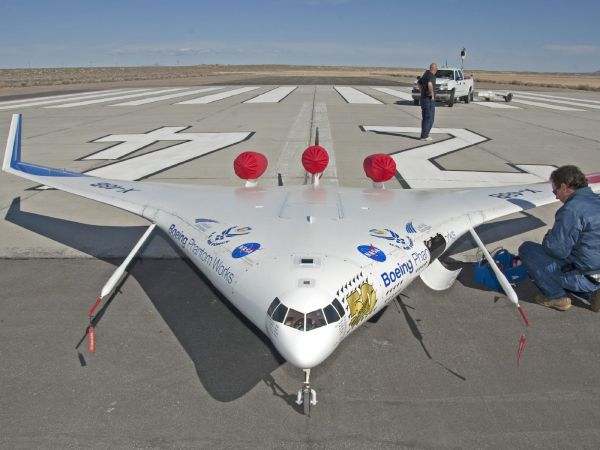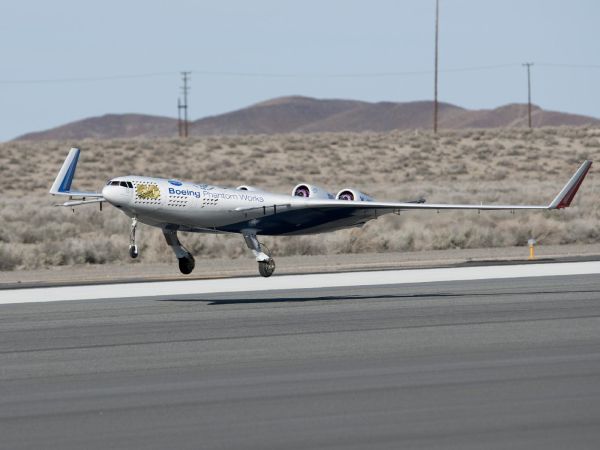First flight of the X-48B
A joint team of NASA and Boeing engineers completed the first phase of flight tests of the unique X-48B aircraft (this is an 8.5% reduced copy of 6.4 meters in length). The curved wings of this liner show how the aviation of the future can become.

The design is based on the fact that not the wings, but the fuselage provides the aircraft with a significant part of the lift. This approach provides normal load capacity with significant fuel economy. Since the time of the secret fascist bombers, so far no one has tried to implement such a technology.
During test flights, the stability of the aircraft was checked in various flight conditions in flight and, most importantly, during landing. According to the participants in the experiment, it is stability at low speed, that is, during landing, that is the most important problem, but it was successfully solved.

The X-48B project is part of NASA's new Environmentally Responsible Aviation program, which creates more economical and quieter aircraft.
In the last phase of testing, the X-48B pilot (that is, the on-board computer operator) was allowed to test the aircraft for strength: exceed the allowable angle of attack and angle of heel. The computer coped and, after extreme tests, was able to return the plane to normal mode.
For future testing, a new prototype X-48C is being manufactured.

viaWired

The design is based on the fact that not the wings, but the fuselage provides the aircraft with a significant part of the lift. This approach provides normal load capacity with significant fuel economy. Since the time of the secret fascist bombers, so far no one has tried to implement such a technology.
During test flights, the stability of the aircraft was checked in various flight conditions in flight and, most importantly, during landing. According to the participants in the experiment, it is stability at low speed, that is, during landing, that is the most important problem, but it was successfully solved.

The X-48B project is part of NASA's new Environmentally Responsible Aviation program, which creates more economical and quieter aircraft.
In the last phase of testing, the X-48B pilot (that is, the on-board computer operator) was allowed to test the aircraft for strength: exceed the allowable angle of attack and angle of heel. The computer coped and, after extreme tests, was able to return the plane to normal mode.
For future testing, a new prototype X-48C is being manufactured.

viaWired
